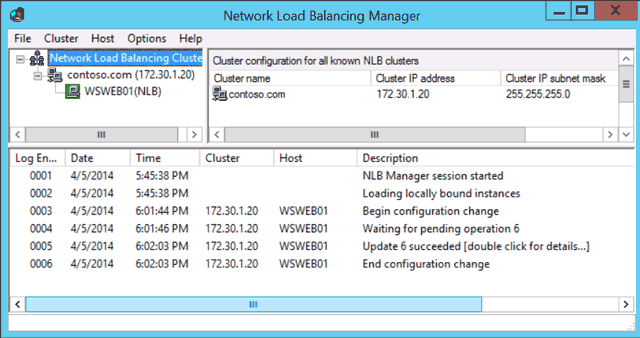

These instruct HAProxy to inspect the incoming RDP connection for a cookie if one is found, it is used to persistently direct the connection to the correct real server. The two new configuration directives are persist rdp-cookie The two real servers are on 192.168.0.11 and 192.168.0.12, in the same subnet as the Virtual IP. The load balancer's Virtual IP is set to 192.168.0.10, listening on port 3389 for RDP. Note that this is only a fragment of the haproxy.cfg file, showing the relevant options.

The real servers were two Windows Server 2008 machines, with identical test users set up on both. We have been testing the latest development release of HAProxy, 1.4-dev4, on a Enterprise R16 device. Thanks to work by Exceliance, it now supports RDP Cookies, offering a solution to the persistence problem. The current development version of HAProxy has made an important step forward in making this possible. RDP, however, is not an easy protocol to load balance sessions are long-lived and need to be persistent to a particular server, and users may connect from different source addresses during one session.

Users would connect to "farm" and the ensuing connection would be directed to one of the RDS servers based on the DNS round robin, which would then query the Session Broker server, which would then direct the connection to one of the servers (as described above).When you have users depending on Windows Terminal Services for their main desktop, it's a good idea to have more than one Terminal Server. So if you use DNS round robin, for instance, and your Session Broker farm name is "Farm", then you'd create two A records for farm with the ip address of each RDS server: If you use DNS round robin then you'd create a dns A record for every TS server, using the Session Broker farm name for the A record. That's what DNS round robin or NLB is for. Session Broker load balances the sessions, but it doesn't load balance the incoming connections. An incoming connection will be routed to one of the servers (based on whatever mechanism you choose), the server receiving the incoming connection will query the Session Broker server to find out if the user has a disconnected session and will direct the connection to that server, or if no disconnected session exists the connection will be directed to the least loaded server. You'll need to use DNS round robin or NLB to distribute the incoming connections.


 0 kommentar(er)
0 kommentar(er)
